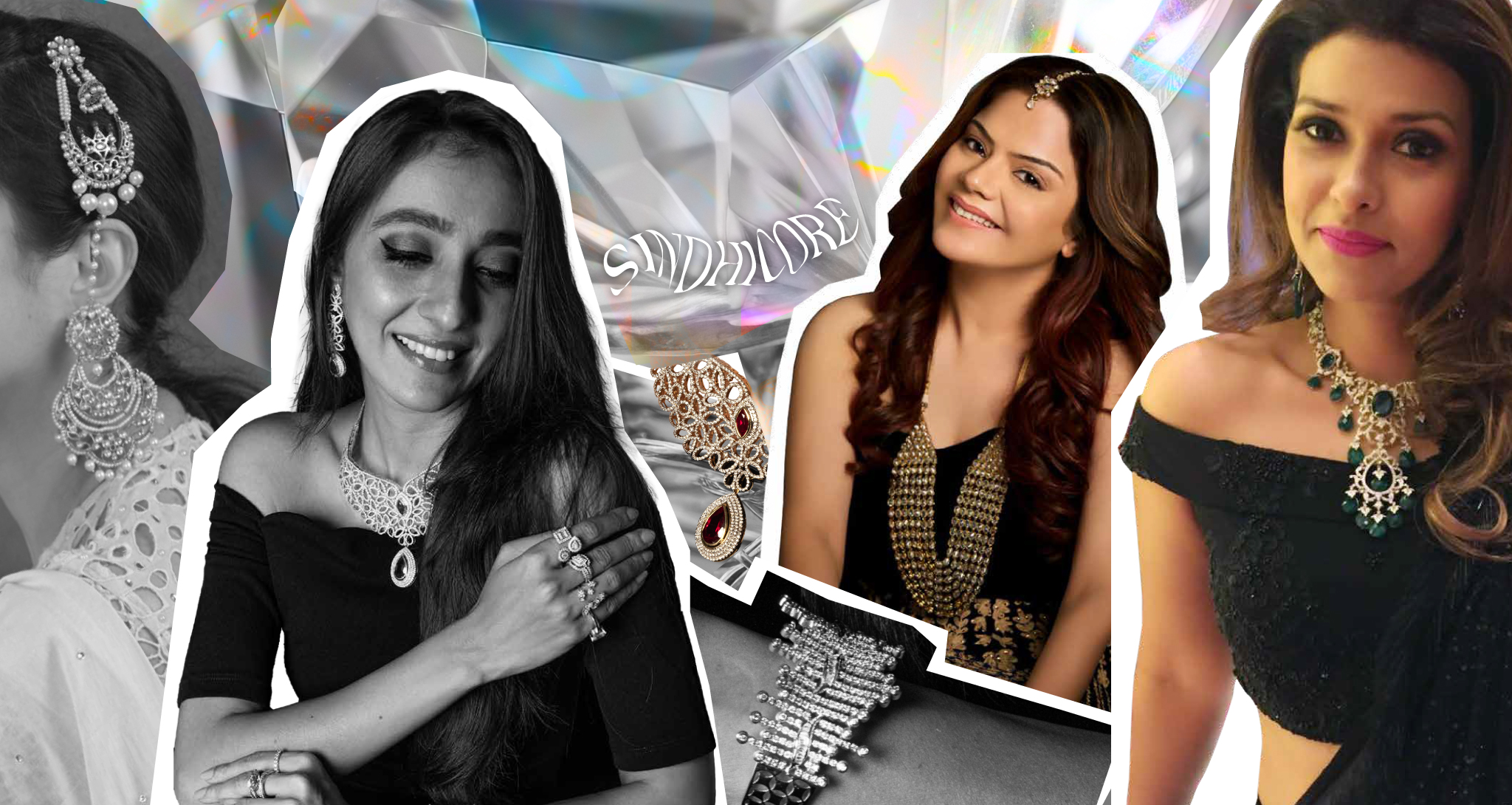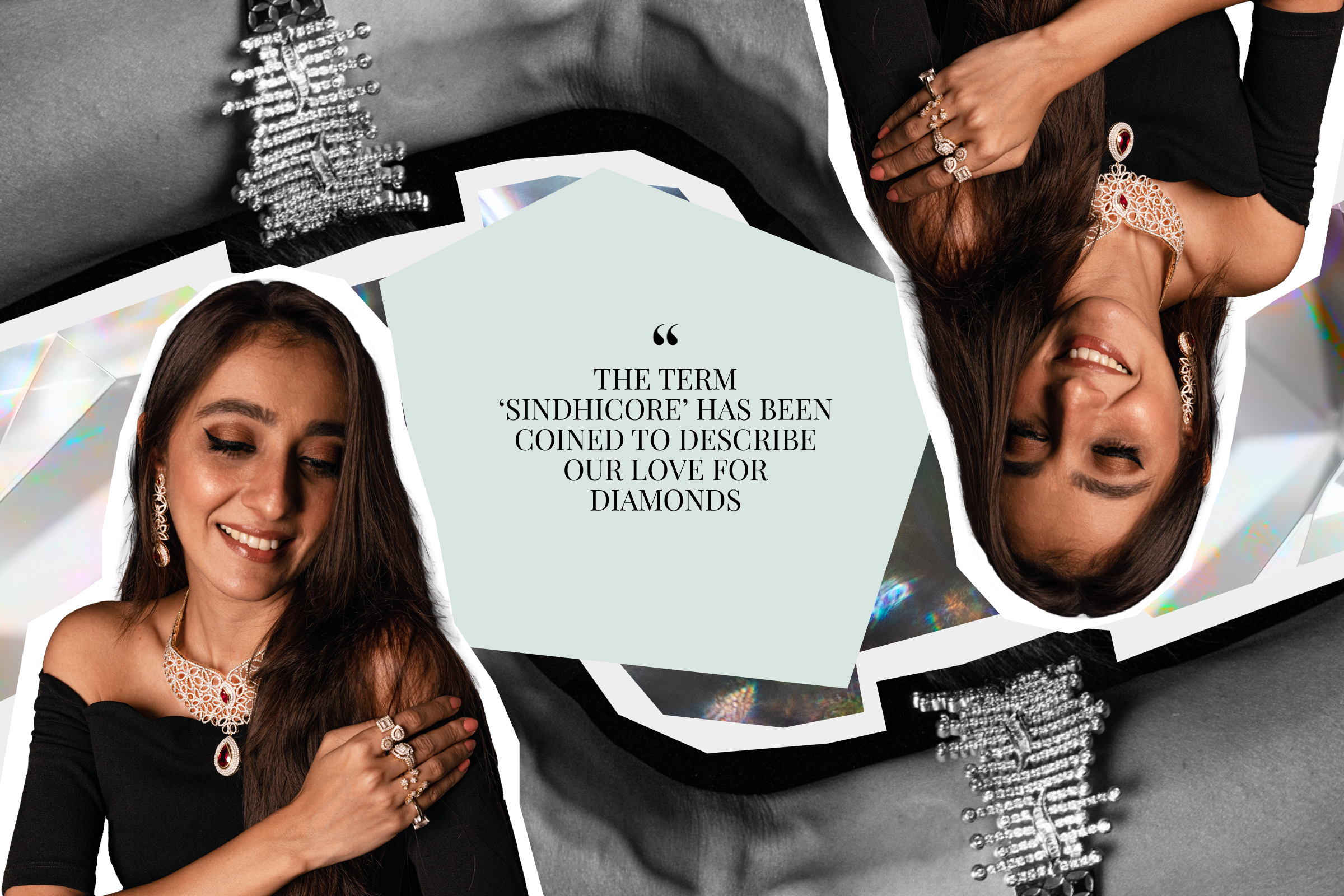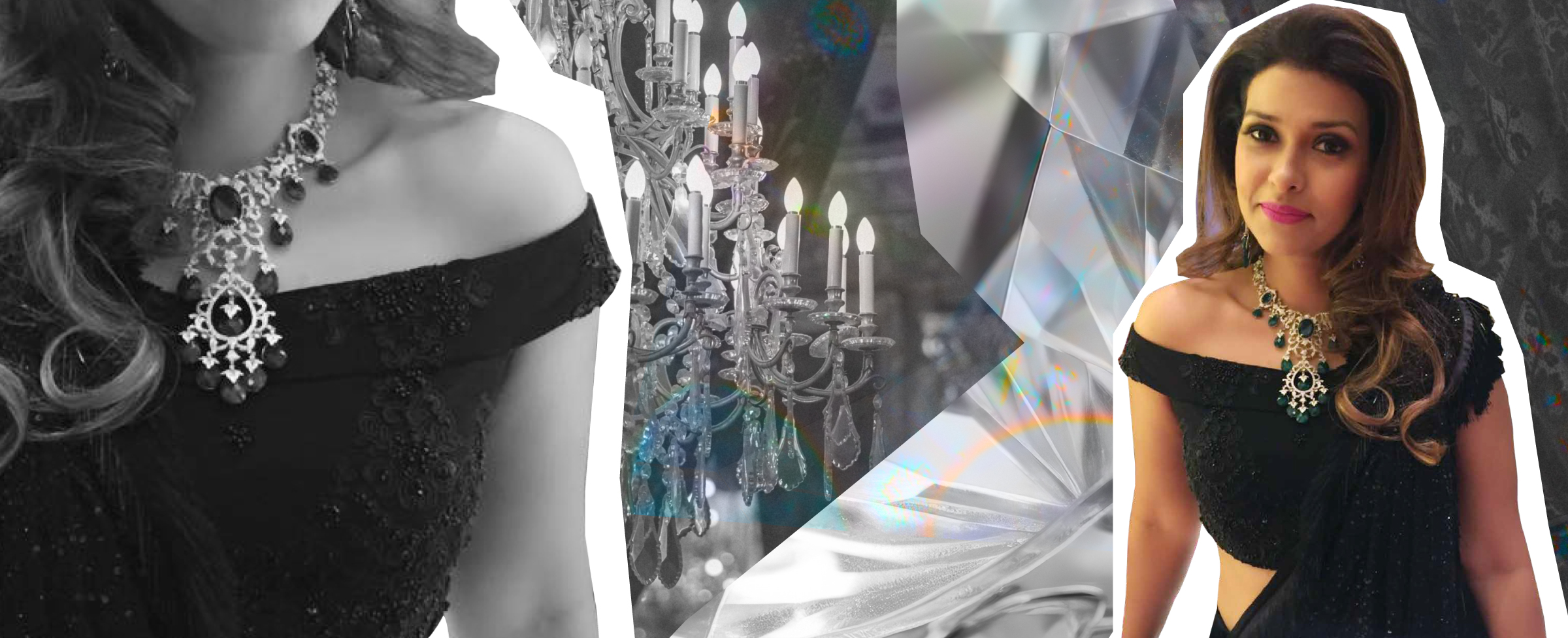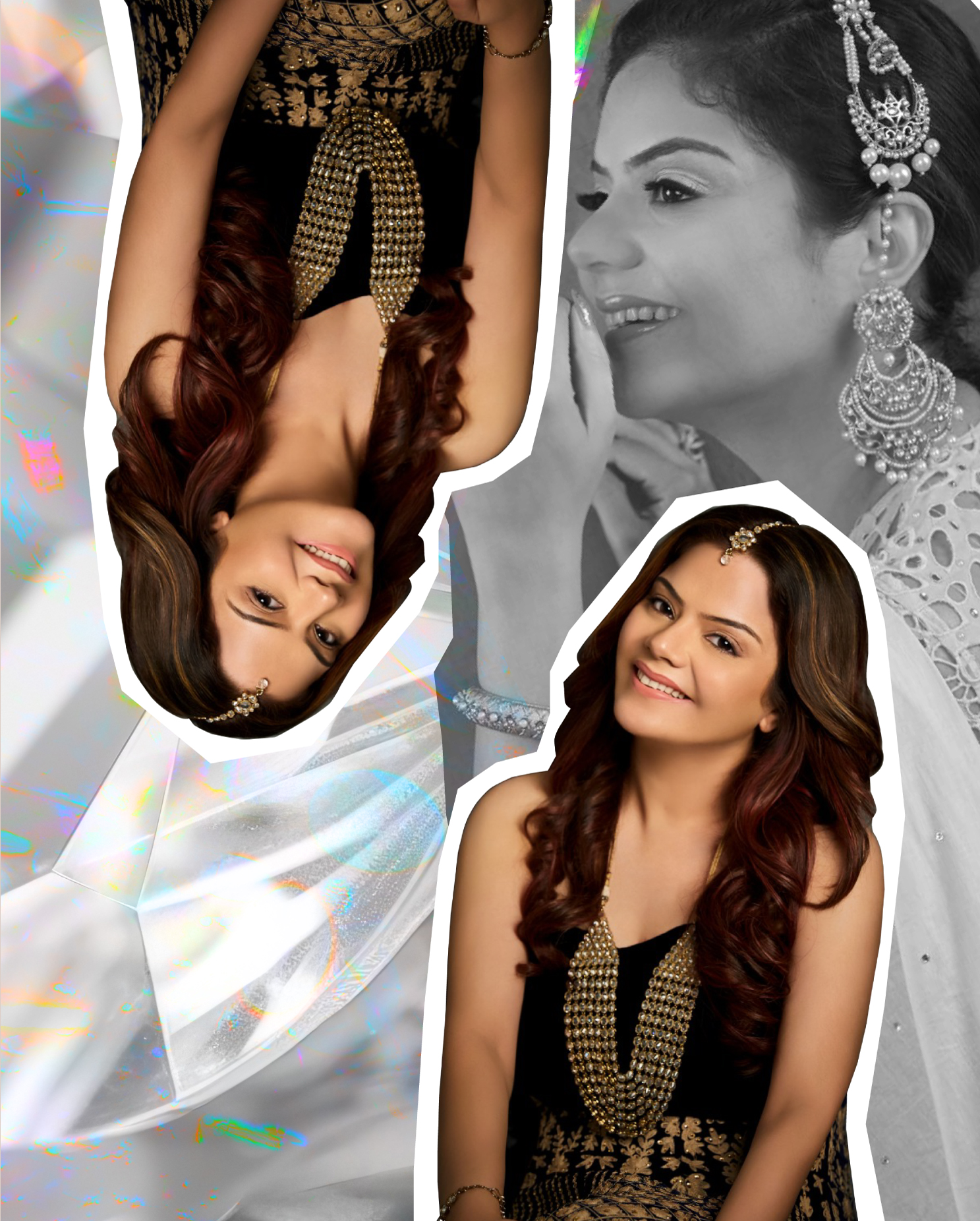Why Sindhis Sparkle: A Diamond-Studded Drama
Dive into the dazzling world of Sindhis, where natural diamonds aren’t just gems, they’re family members and Sindhicore is not just a fad but a way of life.

This is the tale of people as determined as carbon under pressure, as tough as the hardest substance on earth, and as multifaceted as a brilliant-cut gem. Yes, folks, we’re talking about the Sindhis and their enduring love affair with natural diamonds. From Bollywood glamour, childhood tales, and yes, even weddings that outshine chandelier showrooms—here’s why the Sindhi Scrooge McDucks have spent decades either polishing their diamonds or gifting them
As a proud Sindhi myself, I sit here writing this tale while decked out in my usual natural diamond-studded regalia—a bangle, a necklace, a ring, a bracelet. I glance at my reflection on the computer screen and can’t help but wonder if I’ve turned into a walking, talking (well, typing) Sindhi stereotype. I often wonder how my love for rare diamonds began and my mind invariably drifts back to my childhood. I remember vividly how my mother would whisk me away on our annual “Diamond Diwali” shopping sprees. At just six years old, I would sit in the plush velvet chair at K Marc Jewellers, Manoj Chainani’s opulent Mumbai showroom, sipping a juice box while my mother and Mr Chainani bantered over the latest designs and the most exquisitely rare diamonds in the store.
Chainani, a jovial man with the constitution of a teddy bear and the shrewdness of a hawk, runs a thriving natural diamond business in Bandra. His forte: an elite clientele of ritzy Bandra Sindhi socialites. He would parade an array of glittering diamond necklaces, bracelets, earrings, and even nose rings, each more dazzling than the last.

However, I am not alone in being groomed to love diamonds. As I talk to Vidhi Gurnani, a celebrity stylist and fashion designer specialising in ethnic wear, she opens up to me about her childhood. “I’ve always grown up seeing my mum buy diamonds, wear diamonds and invest in diamonds. She’d always tell me, ‘all these diamonds are going to be yours one day’,” she says.
“Sindhis have been raised to invest in worthwhile assets,” explains Chainani. And it’s an investment that keeps appreciating—twenty years ago at his shop, a one-carat natural diamond cost 2.5 lakhs. Now, it sells for eight.
There’s more sparkle to this story than just the pursuit of shiny stones. But, before we dive into this feature, I want you to envision what you’re about to read as a Bollywood movie. The main character? Natural diamonds, of course. The supporting cast? Sindhis. The plot? An epic love story stretching across generations. The twist? Well, wait for it.
Scene 1: A Brief History of Sindhis and Diamonds
Our tale begins centuries ago in the bustling lanes of Sindh, a region now part of modern-day Pakistan. Sindhis, known for their business acumen and entrepreneurial spirit, were the pioneers of the trade in India. Noted author Saaz Aggarwal, who has written numerous books on Sindhis, offers an intriguing hypothesis about the origins of the Sindhi diamond fascination. She transports us back to the 1860s when a band of ambitious traders from Hyderabad (now part of Pakistan) became British citizens and embarked on a journey of fortune-seeking. As reported on the Livemint website, Aggarwal said, “There was quite a lot of trade in South Africa then. That’s when a lot of glitzy things entered Sindh and it became popular to show [off] your wealth.”
Arzoo Karnani, founder of fashion label Arz by Arzoo, echoes this sentiment, “Economic factors, such as trade and business opportunities, might have played a role in the historical acquisition of diamonds within the Sindhi community.” So, the Sindhi love affair with rare gems and diamonds might have been sparked in this era of prosperity and showmanship.

Scene 2: The Great Migration and the Diamond Dream
The year was 1947. The partition of India led to a mass migration of Sindhis from Sindh to India. Carrying little more than their dreams, they arrived in a new land. And amongst those dreams shone the desire for natural diamonds.
Chairman of the Hinduja Group of Companies, Ashok Hinduja’s words, excerpted from the foreword of the book ‘Paiso, How Sindhis do Business’ by Maya Bathija, encapsulate the unyielding spirit of Sindhis. He says, “The Partition of 1947 was catastrophic for the community. We became stateless as we had to migrate from our ancient homeland. Our never-say-die attitude helped us embrace the numerous lands that we migrated to. We built ourselves from scratch to regain our prosperity by being true to our business heritage.”
While Sindhis lost a lot of their immovable assets during the partition, rare and natural diamonds proved to be dependable allies. “It’s a certain exquisite positioning in the minds of the last several generations that has led to diamonds having a special place with Sindhis versus any other communities. Generations have handed down their diamond jewellery to the next as a keepsake and a family heirloom,” says Vinita Bijlani, who is the managing director of a multinational executive search firm in Mumbai.
Scene 3: Diamonds as a Part of Sindhi Culture
It’s 2020. A cool breeze envelops a bride as she coyly walks down the aisle at a destination wedding. We are at a mandap swaying with flowers, shiny objects, and necklaces made of gold bars (Yes, it’s true, this does happen). It may look like a set from a Sanjay Leela Bhansali film, but no, you are in the midst of a Sindhi wedding.
“Sindhis are large hearted people so they like everything larger than life,” says Namrata Ramsay, a television writer, actor and daughter of late Bollywood film director Shyam Ramsay. “It is a generous community, and diamonds are considered an auspicious gift within the community,” she adds. Bijlani agrees, “They are viewed as a mainstay of any traditional dressing—I would say any significant life occasion”.
Attending a Sindhi wedding is like walking into a real-life treasure chest, where the bride and groom resemble glittering diamond-covered mannequins, so bedazzled that they could give the Queen’s necklace at Marine Drive a run for its money. “Diamond bangles are compulsory for Sindhi weddings. Big necklaces and diamond rings are common too,” says Chainani, but according to the jeweller, not having a set of “rich-looking, diamond bangles” can be blasphemous by the hawk-eyed Sindhi aunties, who are judging every woman and their families in their radius to check if they are complying by the “Sindhi standard practices” of adornment. Ramsay notes that “Solitaires have always been a favourite in the community,” while Karnani chuckles as she says, “the bigger [the diamond], the better”.
However, Chainani also notes that “now the trend has changed from big necklaces to small sets, pendants and petite bracelets.” The bangles remain constant because “they are a good investment that look rich”. And while we are on the topic of Sindhi weddings, let’s not forget the groom. If a Sindhi groom doesn’t find a solitaire staring back at him in his wedding band, it’s akin to discovering there’s no icing on your birthday cake. It’s less a wedding and more a crime scene. So, remember, if you’re ever invited to a Sindhi wedding, don’t bother with the sunglasses. You’ll need welding goggles.
As for the kind of diamonds most popular in the community, Chainani says, “most Sindhis go for good quality VVS/VS GH colour diamonds”. But why do Sindhis prefer this grade of diamonds? VVS stands for ‘Very, Very Slightly Included’ while VS stands for ‘Very Slightly Included’. Both are high-clarity grade diamonds, indicating that they have very minimal inclusions, if any at all.

SINDHIS ARE
LARGE-HEARTED
PEOPLE SO THEY LIKE
EVERYTHING LARGER
THAN LIFE

There is no such thing as too much bling when it comes to sartorial choices for Sindhis
Scene 4: The Sindhi-Diamond bond in the 21st Century
Fast forward to today. Ramsay shares a life experience on this account of Sindhis and their undying love for natural diamonds. “When I got my first paycheck from acting, apart from the gifts that you do for your family, a diamond was the first thing that I gifted myself. It was me celebrating myself and my first step into the world of being [financially] independent.”
Talking about celebrating milestone events, diamond-studded Sindhi celebrities have carried the torch of tradition with grandeur. Who can forget the iconic moment at the 2019 Cannes Film Festival when Bollywood queen Sonam Kapoor, whose lineage boasts half-Sindhi roots, strutted down the red carpet, looking like a million bucks (or rather, a million carats) in her sleek white tuxedo? Complementing her ensemble was an exquisite emerald and diamond necklace that was nothing short of a showstopper. Her Sindhi heritage twinkled back at us through those gleaming gems, manifesting itself in a way that was as subtly sophisticated as it was absolutely captivating.
And how can we forget the Bollywood sweetheart Kiara Advani, at her wedding early this year? Walking down the aisle, resplendent in Manish Malhotra’s jewellery, that moment seemed straight out of a Karan Johar movie. Advani, the quintessential Sindhi bride, was studded with emeralds the size of boulders, interspersed with white diamonds so bright, they could guide sailors lost at sea. That’s how Sindhis roll.
‘The End’ Scene: The Love Saga Continues
As our love story draws to a close, remember that the Sindhi fascination with natural diamonds isn’t just about the sparkle, the status, or the wealth. It’s about preserving a legacy, a tradition, and a cultural identity that has endured challenges, crossed borders, and is still shining, even without a land they could call home.
More than anything, natural diamonds give Bijlani a sense of air that “I can face today with confidence”. For Ramsay, “a diamond depicts a celebration. It is a symbol of love. In a world that is changing so rapidly, it is nice to know that a diamond will always be there.” Meanwhile, Gurnani explains that the community’s love for diamonds has also become a part of pop culture “DietSabya has coined the term ‘Sindhicore’ to describe our love for diamonds,” she says.
The trend isn’t just confined to Sindhi women, thanks to Bollywood icons like Ranveer Singh, who also serves as the brand ambassador for the American jewellery house, Tiffany & Co.
Singh, known for his eclectic and daring style, is often spotted wearing his five-carat diamond studs which gleam more intensely than the twinkle in a hopeful actor’s eye at an audition for a Bollywood blockbuster.


Natural diamonds are a Sindhi’s favourite accessory from a work meeting to a cocktail party
But as the community evolves, its love for the brilliant-cut gem grows, keeping it ever-rooted in its culture. “Passing down heirlooms is such a beautiful tradition. It keeps us connected to our ancestors and elders. How often do we think of our great-grandparents? When you have a piece of jewellery that once belonged to them, you think of them. My mum gave me my nani’s ring, it was her everyday ring, and it’s so special and even though I never met her, that ring makes me feel closer to her,” says Ramsay, as she goes down memory lane.
This brings us to the conclusion, that if you are born a Sindhi, you can never have too many diamonds or too much dal pakwaan. This is a love story that, just like a diamond, is forever.
